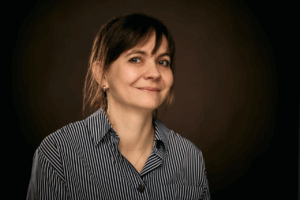
The randomized data foundation on which clinicians base decision-making for vascular surgery patients is derived from populations that do not represent the patients they see and treat on a day-to-day basis, a new research paper has found.
The review, recently published in BJS Open, involved a comparison of 307 randomized clinical trials including 66,449 patients and UK National Vascular Registry (NVR) data for 119,019 patients. Based on their results, authors Joseph Cutteridge (York and Scarborough Teaching Hospitals NHS Foundation Trust, York, UK) and colleagues conclude: “There are significant differences in demographic and clinical factors between patients recruited to vascular surgery randomized clinical trials and the real-world [NVR] vascular surgery patient population.”
Specifically, the UK-based research team found that randomized clinical trial patients were younger across all operations and that, for carotid endarterectomy, bypass and major lower limb amputation trials, there were differences in female patient representation. The authors note that further comparisons were limited by the insufficient baseline data reporting across randomized clinical trials, and that there was no consistent reporting of ethnicity, body mass index (BMI) or alcohol consumption in the NVR.
Speaking to Vascular News following publication of the study, lead author Kasia Bera (University of Oxford, Oxford, UK) notes that the importance of basing clinical decisions on the best available evidence, and specifically randomised clinical trials, is instilled in medical school. Often, however, she notes that “the evidence doesn’t fit the patient in front of us,” highlighting a gap between the data on paper and the patients presenting in clinical practice.
“It is difficult to know if the evidence we have— and we have some really good evidence in vascular surgery—applies to our patients,” Bera says. “If I see someone in clinic who is diabetic, might be of Asian origin and might be female, I look at the trials and there are just very few patients who are like this.”
Bera posits that the vascular surgery specialty “needs to do better” with regard to making research more representative of the population, which should in turn help clinicians to “make treatment more personalized”.
Proposing some specific recommendations, Bera and colleagues suggest in BJS Open that minimum reporting standards for baseline data should be defined to allow future randomized clinical trials to represent “real-world” patient populations and ensure the external validity of their results.
Bera shares that agreeing on these reporting standards is the “first step” and one that can realistically be achieved within the next year. The next step is awareness, with Bera underlining the importance of ensuring support from funding bodies and journal editors. “There’s a lot of power in a journal saying we’ll only publish your study if you adhere to minimal reporting standards,” she says.
In addition, Bera highlights the need for clinical units to be active in research. She comments that this is something currently done “pretty well” in the UK, before stressing the importance of “making sure everyone in the country has access to a research-active unit rather than having a few hubs”. The result, Bera suggests, would be that “no matter where you live, you have the option to participate in research, and that means the whole country is much better represented”.
Taking a step back, Bera is of the opinion that there is a need to look outside of vascular surgery for some “novel ideas” when it comes to improving randomized trial design. For example, she references the success of adaptive platform trials such as the RECOVERY trial conducted during the COVID-19 pandemic, as well as the concept of randomised, embedded, multifactorial adaptive platform (REMAP) trials that are being used in the critical care space.
“I think we should really learn from some of these methodologies and use them for our trials to make them even better in the future,” Bera suggests. “I think historically we didn’t have the computational power to do this sort of thing, whereas now we don’t have that excuse, so we should be able to have trials where the default would be for all patients who want to participate having the choice to do so.”
Bera also encourages a move away from the laser-focus on randomized clinical trials. While these have long been considered the ‘gold standard’ when it comes to research, Bera stresses the importance of considering registries too, and seeing both as complementary. “We must not see one as better than the other,” she says, suggesting that artificial intelligence (AI) and machine learning will improve both study types in the future, streamlining data collection and allowing for the more targeted recruitment of patients.
Bera is also keen to stress that the intention of the BJS Open paper is not to criticize the design of previously conducted trials, stating that it is important to consider the context in which many of them were set up in order to improve design moving forward. She notes, for example, that some US trials were historically done in veterans, who were more likely to be male. She also shares some insight from first-hand experience designing trials: “When you conduct a trial, you have to be quite pragmatic in many ways, so I think it’s very easy for someone to say you should have done better, but you always have to make a compromise and ask ‘what can we do?’ and ‘what’s possible?’”
“I think trials are getting better, but there’s still a long way to go,” she says.
In the BJS Open paper, Bera and colleagues home in on some randomized clinical trials that are setting new standards regarding representation of demographic and clinical factors, including WARRIORS. This trial, led by a team from Imperial College London (London, UK), is set to assess whether women with small abdominal aortic aneurysms (AAAs) currently are treated too late in their clinical course.
“I think WARRIORS is a great trial because we will actually get some evidence for women, which has been long neglected, and I think looking back often this was probably a pragmatic decision because lots of the vascular surgical conditions are more prominent in men,” Bera comments.
Finally, despite setting out a clear path forward, Bera recognises a notable challenge in the form of there being limited time for research in a healthcare system as “stretched” as the UK National Health Service (NHS). “We have so many pressures and to deliver research alongside clinical work when we all know that clinical work is so important is often difficult,” she says.
However, Bera reiterates the need to see research as a core component of optimal patient care. “We know patients who are in trials get better outcomes,” she notes.
“I think that’s the biggest change in mindset, that we have to make research an important part of care,” Bera says. “We have all these targets, we measure all the time, and I think how good we are at delivering research alongside clinical care should be a key metric we consider because it will make the clinical care better, I think.”
Here Bera suggests that clinical academic pathways for trainees and more support for academic and research delivery alongside clinical work could represent the way forward.
In the nearer term, Bera encourages feedback and discussion. “I think it would be great to hear from others and see what everyone thinks,” she tells Vascular News. “And I think bringing people together in the future is important, so we can actually decide how we can take this forward.”
“If our paper is a starting point [for] a discussion, that would be great.”










